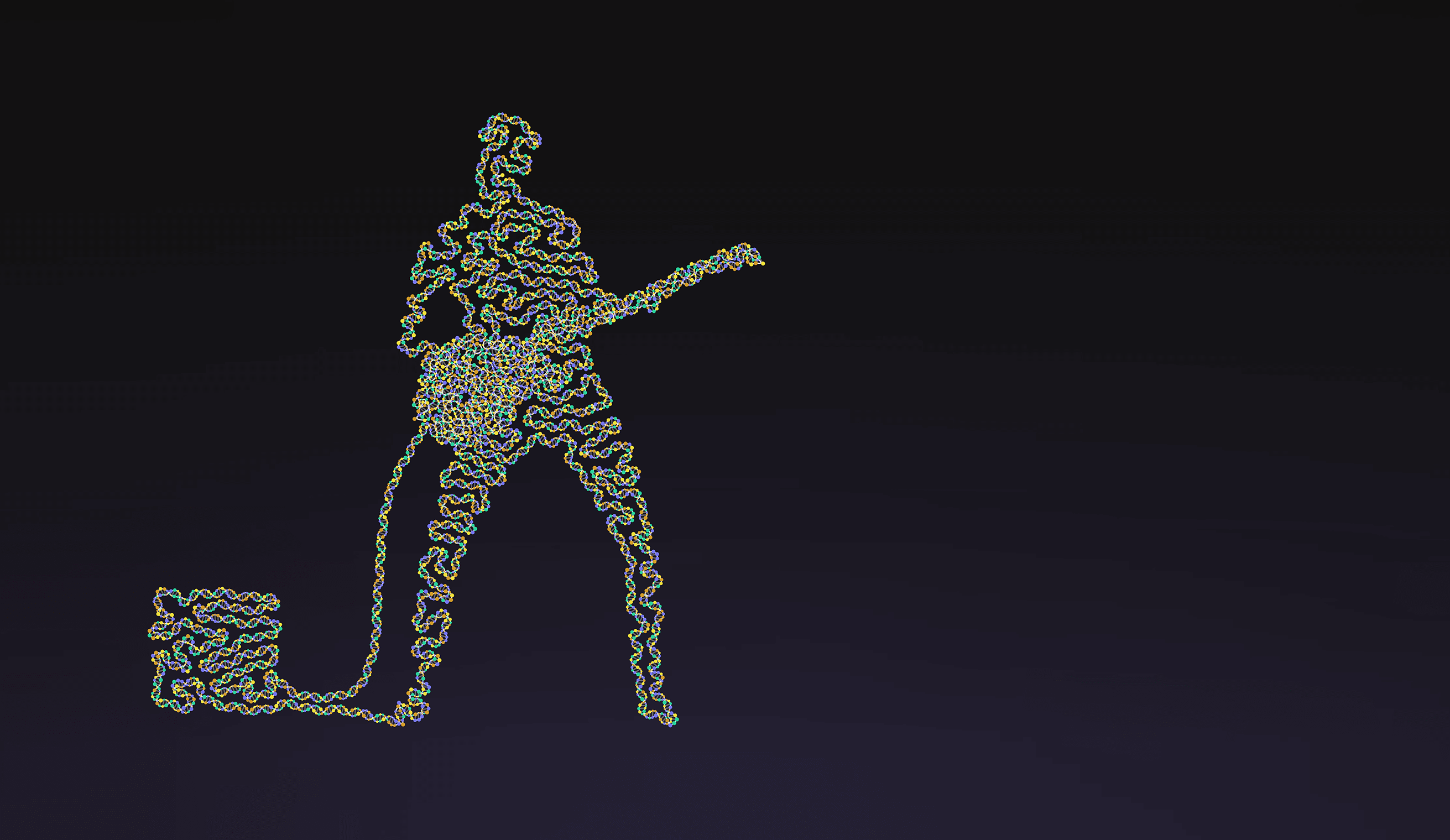December 12, 2017
5 min read
Deep Purple’s “Smoke on the Water” Becomes a Piece of Scientific History
Microsoft, UW, and Twist Bioscience collaborate to encode the songs “Smoke on the Water” and “Tutu” at archival quality in DNA.

“Fire! If you’d kindly move calmly toward the exit, ladies and gentlemen. Calmly,” warned Frank Zappa during his band’s performance at the Casino Barrière de Montreux in late 1971. Someone in the audience had just fired off a flare, which stuck in the rafters of the wooden building starting a catastrophic fire.
Among the crowd were hard rock pioneers Deep Purple, who were scheduled to record their sixth studio album, “Machine Head,” at the Montreux casino with the Rolling Stones’ Mobile Studio.
After evacuating, Deep Purple sat across Lake Geneva watching as the casino burned to the ground. Smoke from the fire clung thick to the water blown down by mountain winds, and fire painted the sky.
Out of the ashes of the Montreux casino arose one of most iconic songs in rock, “Smoke on the Water,” with its driving riffs and treble-filled solos. Early masters of the song were recorded the very next day, and the song was included on “Machine Head,” released in March 1972.
“Smoke on the Water” tells the tale of the Montreux casino fire from Deep Purple’s perspective:
“Smoke on the water, a fire the sky
Smoke on the water
They burned down the gambling house
It died with an awful sound
Funky Claude was running in and out
Pulling kids out the ground”
Funky Claude mentioned above refers to the late Claude Nobs, founder of the Montreux Jazz Festival. Claude was also a volunteer fireman, and saved many lives during the casino blaze. According to an interview between Gibson.com and Nobs, it was he who persuaded Deep Purple to release “Smoke on the Water” after the band played him the song as a surprise. This recording was archived by Montreux Jazz Digital Project, a collaboration between the Claude Nobs Foundation, curator of the Montreux Jazz Festival audio-visual collection and the École Polytechnique Fédérale de Lausanne (EPFL).
In addition to making music history, “Smoke on the Water” is now making scientific history, as the digital record of Deep Purple’s performance of the song at the Montreux Jazz Festival has been encoded onto DNA along with a recording of Miles Davis’ “Tutu.”
Miles Davis was arguably one of the most influential jazz artists of the 20th century, and featured new and experimental music regularly at the Montreux Jazz festival from the early 70s until his death in 1991. His prolific progressive influence on the Jazz scene, and his support for the festival is documented in the 20 CD compilation album of Claude Nobs’ recordings, “The complete Miles Davis at Montreux.”
In a collaboration between Twist Bioscience, Microsoft, and the University of Washington, the digital data of both “Smoke on the Water” and “Tutu” were encoded at archival quality in the four bases of DNA. While other recordings in the collection will need to be replaced every 10 years or so, these songs will remain intact for thousands of years. DNA is nature’s preferred information storage medium, describing the form and function of all life, and this project marks the first data at archival quality stored using DNA.
Quincy Jones, world-renowned Entertainment Executive, Music Composer and Arranger, Musician and Music Producer who has a long-standing association with the festival, enthusiastically endorsed the project. “With advancements in nanotechnology, I believe we can expect to see people living prolonged lives, and with that, we can also expect to see more developments in the enhancement of how we live,” Jones said. “For me, life is all about learning where you came from in order to get where you want to go, but in order to do so, you need access to history! And with the unreliability of how archives are often stored, I sometimes worry that our future generations will be left without such access.
“So, it absolutely makes my soul smile to know that EPFL, Twist Bioscience and others are coming together to preserve the beauty and history of the Montreux Jazz Festival for our future generations, on DNA! I've been a part of this festival for decades and it truly is a magnificent representation of what happens when different cultures unite for the sake of music,” Jones added. “Absolute magic. And I'm proud to know that the memory of this special place will never be lost.”
By the year 2040, it is projected we will run out of memory-grade silicon on which to store the world’s growing demand for digital data storage. This project heralds a new era of data storage. This is the moment DNA as a storage medium breaks beyond the proof-of-principle research stage and can for the first time satisfy real-world applications. This is made possible by high-quality synthetic DNA made by new generation DNA synthesis techniques like that employed by Twist Bioscience and the sophisticated software tools developed by our collaborators at the University of Washington and Microsoft.
For more information on how digital data can be stored on DNA, please visit the Twist Bioscience blog, “Could DNA Supercharge the Digital Revolution?” For a really deep dive on the topic, please read the white paper, “Learn How DNA is Being Used to Store Digital Data.”
Illustration by Martin Krzywinski
The lyrics of Deep Purple’s Smoke on the Water encoded into DNA. Each letter, space and punctuation mark are represented by a unique triplet of the four bases (A, T, G, C), the building blocks of DNA. For example, “smoke” becomes GACCGACGTCAGAGC. In general, to encode a digital data into DNA, a quaternary code is used and allows a base to encode two bits (e.g. A = 00, C = 01, G = 10, T = 11).
What did you think?
Like
Dislike
Love
Surprised
Interesting
Read Next
Get the latest by subscribing to our blog